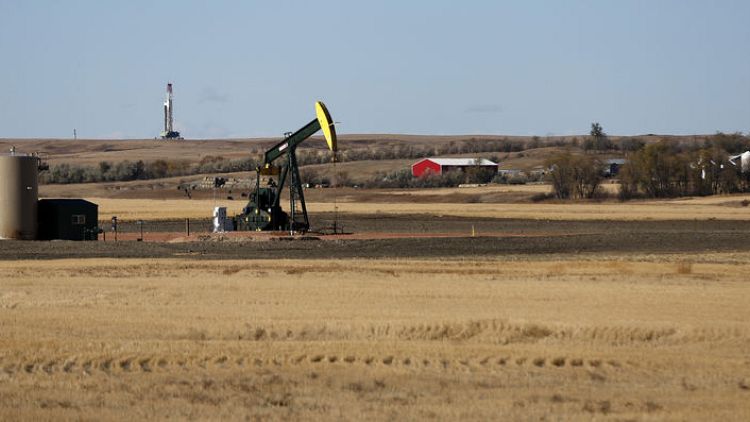TOKYO (Reuters) - U.S. oil prices fell on Thursday, resuming declines after an industry group said U.S. inventories had risen more than expected and shrugging off a report that OPEC and other producers plan to cut output.
U.S. crude futures <CLc1> were down 33 cents, or 0.6 percent, at $55.92 a barrel by 0004 GMT.
The contract rose 1 percent on Wednesday, after sliding for 12 straight sessions and touching its lowest since November 2017.
Brent crude <LCOc1> was yet to trade. It settled up 65 cents, or 1 percent, at $66.12 a barrel, after hitting a session-high of $67.63, having also slumped in recent weeks.
The oil market reversed course on Wednesday after Reuters reported that the Organization of the Petroleum Exporting Countries (OPEC) and its partners were discussing a proposal to cut output by up to 1.4 million barrels per day (bpd), more than officials had mentioned previously.
But it did not taken long for concerns about potential oversupply to return to the fore.
The American Petroleum Institute said late on Wednesday that crude inventories rose by 8.8 million barrels in the week to Nov. 9 to 440.7 million, compared with analyst expectations for an increase of 3.2 million barrels. [API/S]
Oil markets are being hit by surging supply from OPEC, Russia, the Unites States and other producers and concern that a global economic slowdown will cut into energy demand.
That has pushed the price of global benchmark Brent down more than 20 percent since early October, one of the biggest declines since the price collapse of 2014.
The Paris-based International Energy Agency (IEA) also said on Wednesday that the implied stock build for the first half of 2019 is 2 million bpd.
The IEA left its forecast for global demand growth for 2018 and 2019 unchanged from last month, but cut its forecast for non-OECD demand growth, the engine of expansion in world consumption.
U.S. crude output from its seven major shale basins was expected to hit a record 7.94 million bpd in December, the U.S. Energy Information Administration (EIA) said earlier this week. The EIA announces official crude stocks and other data later on Thursday.
The surge in onshore output has helped overall U.S. crude production <C-OUT-T-EIA> hit a record 11.6 million bpd, making the United States the world's biggest oil producer ahead of Russia and Saudi Arabia.
Amid the general market decline, late on Wednesday the CME raised December oil futures margins by 14.5 percent to $3,550 per contract, with the new rate effective from Thursday.
(Reporting by Aaron Sheldrick; Editing by Joseph Radford)



